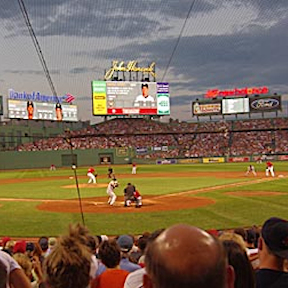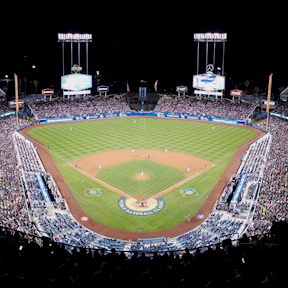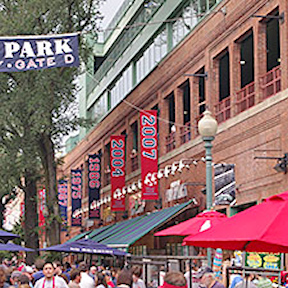Text and photos by Joe Mock
All rights reserved
Prior to the Playoffs each year, I can envision executives of Fox huddled in a Manhattan conference room. They discuss how to get the best ratings for the games they have the rights for — particularly the Fall Classic. They’d prefer not to have teams from the less-populated media markets in the middle of the country, and they definitely want the population centers on the Coasts to have a team to root for.
No doubt, the prospects of a Milwaukee-Houston World Series caused those execs to shudder. The Brewers were the hottest team entering the post-season, and they pushed the Dodgers to the limit in a heated seven-game NLCS.
Over in the ALCS , something had to give, as the two teams with the best regular-season records in all of the Majors faced off. The Astros, the reigning World champs, tried to overcome the deep Red Sox, whose roster was made possible by their $240 million payroll, the highest in AL history.
In the end, the Baseball Gods smiled on Fox. They got their team on the East Coast in the Red Sox — a team with a huge national following. And to rep the West Coast, Fox got the Dodgers, a team that looked lost early in the season, 11 games under .500. But they kept battling and fought their way to their second straight Fall Classic.
So the 2018 Series will be making its second straight appearance in Chavez Ravine, while venerable Fenway will be a host for the first time since 2013. This means that two of the three oldest parks in the Majors are the host sites. And as broadcaster Doug Greenwald points out, it’s a rematch of the 1916 World Series, when the Red Sox of Babe Ruth topped the Dodgers (“Robins” at the time), whose hitting star was Casey Stengel.
As we’ve been doing every autumn since 2003, here’s our look at the “tale of the tape” of the two parks in this year’s Fall Classic. Yes, it’s a little tongue-in-cheek!
 |
Inside |  |
Fenway Park |
Dodger Stadium |
|
| Raise your hand if you attended the first game ever played here. I didn’t think so. It was April 20, 1912. | Year opened | Dodger Stadium opened on April 10, 1962. Believe it or not, that makes it the third oldest park in the Majors. |
| The neighborhood west of downtown Boston was already called Fenway when the team bought this land. Interestingly, the park is no longer on Yawkey Way. The city changed the name to Jersey Street earlier in 2018. | Site | The park is often dubbed Chavez Ravine, because that’s what this valley was called before baseball arrived. The stadium’s address is wonderful: 1000 Vin Scully Avenue. |
| 37,755. During the regular season, the Red Sox averaged 35,747, good for 9th in the Big Leagues | Seating capacity | 56,000. By far, the Dodgers led MLB in attendance in 2018, hitting 3,857,500, topping the Yanks by 374k |
| Natural grass (Kentucky bluegrass) | Playing surface | Natural grass (Santa Ana Bermuda grass) |
| Physical features of the park are household names: Pesky’s Pole, Green Monster, The Triangle | Special features | $100M in renovations in 2013 ushered in new concessions, stores, restrooms and entry plazas |
| Local architect James McLaughlin created the original design. Legendary Osborn Engineering (13 MLB parks) was behind the structural engineering | Designed by | Praeger-Kavanagh-Waterbury |
| $650,000, a princely sum in 1912 | Cost to build | $23 million. You got a lot more for your money back then |
| 310′-379′-389′-380′-302′ The deepest point is 420′ at the back corner of The Triangle to the right of CF | Outfield dimensions | 330′-375′-400′-375′-330′ |
| 2018 is the 11th World Series here, although the park’s second (in 1914) was for the Boston Braves, not Red Sox | World Series hosted | This is the ninth World Series — and second in a row — since the Dodgers moved in here |
| 2013, when the Red Sox beat the Cards in 6 | Last World Series won by home team | 1988, highlighted by a hobbled Kirk Gibson hitting a HR for the ages |
| Three. The most recent in 1999 saw the unveiling of MLB’s All-Century Team | All Star Games hosted | Oddly, only once. That was in 1980 — but it will return in 2020 |
| The Citgo sign above Kenmore Square that has been visible beyond LF since 1940 | Landmarks | The Pavilion seats in the outfield. The view of the San Gabriel Mountains |
| The park yielded 7.8% more runs per game than the average MLB park. While the number of HRs was slightly less than average, doubles (36.6% more) and triples (27.6% more) were off the charts | 2018 park factors Source: ESPN |
It’s quite the “pitcher’s park,” as it ranks 26th in MLB in average runs per game. Oddly, it served up 5.7% more HRs than average, but by a wide margin, the fewest triples. |
| Boisterous fans who after waiting 85 years between 1918 and 2004, are no longer satisfied with anything less than World titles | Filled with | Sophisticated fans who are well-known for arriving late to the games |
 |
Outside |  |
Great comparison, Joe!
Joe,
A couple of interesting oddities about the seating capacities of Fenway Park and Dodger Stadium: Fenway Park’s capacity is, as you state, 37,755. But that’s only for night games. It is 37,305 for day games. That’s because some of the bleacher seats in dead centerfield are covered by a tarp for day games to provide a better background for the hitters. Dodger Stadium’s capacity has always been listed as 56,000, even with various renovations to the ballpark.
David, you are indeed the guru of baseball-attendance data!! Yes, Fenway does have a different capacity for night games than day games (I never knew WHY, though, until reading your explanation), but since there are no day games during the World Series, I didn’t list the day-game capacity.